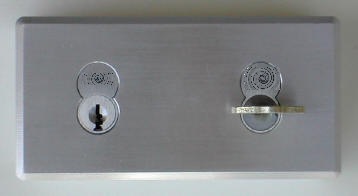This article has multiple issues. Please help improve it or discuss these issues on the talk page . (Learn how and when to remove these messages)
|

A key retainer device (KRD) is a small metal unit that is wall or door mounted, usually designed for the interchangeable core that retains one key (Key A) while the second key (Key B) is used for authorized purposes. When the key in use (Key B) is returned into the key retainer, the key held captive (Key A) is turned and then can be released. Now, the special key, perhaps top master (Key B) is held captive again. The key retainer is a method for providing visual key control.